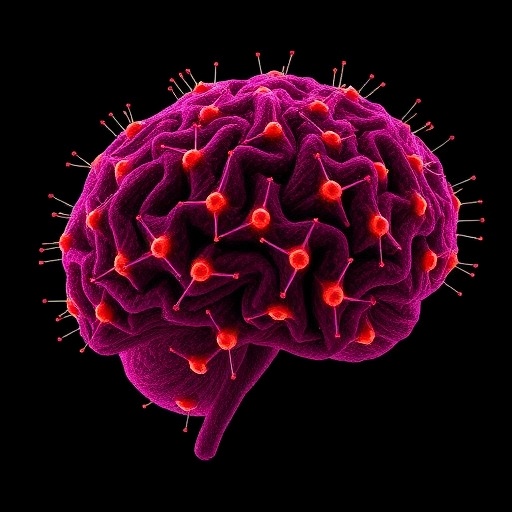Plastic pollution is an escalating environmental crisis that presents severe challenges not only to ecosystems but also to human health. At the core of this menace are microplastics, defined as plastic particles ranging from 1 micrometer to 5 millimeters, and nanoplastics, which are smaller than 1 micrometer. Their presence has been ubiquitously detected across various environments, including oceans, rivers, soils, and even the atmosphere. Alarmingly, these particles have infiltrated living organisms, spanning the entire hierarchy of life—from marine creatures to terrestrial fauna and even human tissues. This profound infiltration could signal potential long-term ecological and health risks that remain inadequately understood.
Despite increasing awareness of microplastics and nanoplastics, the methodologies employed for their detection significantly favor ideal conditions, such as those found in water samples. When it comes to biological samples, the current techniques often fall short of providing accurate quantification and characterization of these contaminants. Detection strategies that work seamlessly in fluid media may not be effective in analyzing complex biological matrices, which often exhibit competing constituents that can interfere with results. This is a pivotal issue, particularly considering that the sizes of microplastics found in organisms often exceed those typically detected in aquatic environments.
Recent reviews, including comprehensive analyses of this scientific conundrum, reveal the urgent need for advancements in detection methodologies tailored for biological samples. The existing protocols primarily focus on identifying microplastics and nanoplastics in water, thereby overlooking the multidimensional interactions that these particles undergo when inside organisms. Thus, researchers emphasize the necessity to bridge this knowledge gap to fully understand the risks posed by microplastics within biological systems. The need for robust detection tools is heightened by the pervasive ingestion and accumulation of these pollutants in the food web, raising concerns over bioaccumulation and biomagnification.
Efforts to innovate detection techniques must consider the intricacies of biological specimens, which are often embedded in matrices comprising various organic and inorganic substances. Standard laboratory practices typically lack the requisite sensitivity and specificity needed for isolating microplastics and nanoplastics from these complex samples. Consequently, scientists are exploring advanced methodologies, such as laser ablation coupled with mass spectrometry and fluorescence microscopy, which could offer improved capabilities for identifying and characterizing microparticles in biological matrices. These methodologies promise to elevate the understanding of how microplastics and nanoplastics impact living organisms at cellular and molecular levels.
There is also a call to reassess and refine the current sampling and preparation processes used for biological matrices. The inherent challenges in preparing such samples—ranging from homogenization to extraction—can lead to significant losses of microplastics and nanoplastics, thereby distorting quantitative analyses. Researchers are investigating optimized workflows that combine robust sampling, effective cleaning, and advanced extraction techniques to mitigate these challenges. This intensified focus on improving methodologies is essential for gaining accurate insights into the extent of contamination and its biological implications.
Beneath the surface, the biological interactions of microplastics and nanoplastics are complex and multifaceted. Studies have shown that these particles can elicit various biological responses, depending on their size, shape, surface chemistry, and associated additives. They can affect cellular processes, trigger inflammatory responses, and even lead to cellular toxicity. As these interactions unfold within living organisms, they highlight the necessity of comprehensive research that encompasses both the chemical characteristics of microplastics and the biological implications of their presence. This dual approach will facilitate a more holistic understanding of how these pollutants influence ecological balance and human health.
In light of these findings, there is a pressing need for inter-disciplinary collaboration among chemists, biologists, and environmental scientists. This collaborative effort will yield a more nuanced understanding of microplastics’ journey through the environment and their ultimate fate within living systems. Such collaborative research could lead to innovative solutions—not only in terms of detection but also in terms of mitigation strategies that address the root causes of plastic pollution. Through concerted action and interdisciplinary dialogue, it is possible to forge pathways toward effective policy frameworks that could curtail plastic waste production and promote sustainable alternatives.
The topic of microplastics and nanoplastics extends beyond environmental studies; it intersects health sciences, sociology, and policy-making. The public health implications of microencapsulation of toxic substances through plastic degradation are not yet fully understood. As microplastics are ingested by marine life and subsequently consumed by humans, the ramifications for food safety and public health are profound. Increasing public awareness and scientific literacy on this critical issue could empower individuals and communities to advocate for stronger regulations and preventive measures against plastic pollution.
In parallel, researchers highlight the necessity for global initiatives and partnerships aimed at fostering innovation in plastic alternatives and sustainable materials. Solving the plastic pollution crisis requires not only improved detection techniques but also a paradigm shift in how society views plastic use and waste. By exploring biodegradable and renewable materials, it may be possible to reduce reliance on single-use plastics and minimize environmental exposure to microplastics.
In conclusion, the emergence of microplastics and nanoplastics as significant environmental pollutants calls for an urgent reassessment of current research methodologies and public policies. While detection techniques have grown more sophisticated in ideal media, the complexities inherent in biological samples highlight the need for further innovation. Enhancing our understanding of the interactions and impacts of these pollutants on living organisms will require ongoing research, inter-disciplinary collaboration, and active engagement with policymakers. Only through a collective and informed approach can society hope to mitigate the risks posed by micromaterials in the environment, ensuring a healthier future for ecosystems and human populations alike.
In the fight against plastic pollution, it is essential to view the detection and analysis of microplastics and nanoplastics not merely as scientific challenges but as pivotal steps in a larger journey toward ecological restoration and public health safety. With continued research and a commitment to systemic change, there is hope for reversing the tide of plastic pollution.
Subject of Research: Detection and characterization of microplastics and nanoplastics in biological samples.
Article Title: Detection and characterization of microplastics and nanoplastics in biological samples.
Article References:
Zhao, J., Lan, R., Tan, H. et al. Detection and characterization of microplastics and nanoplastics in biological samples.
Nat Rev Bioeng (2025). https://doi.org/10.1038/s44222-025-00335-0
Image Credits: AI Generated
DOI: 10.1038/s44222-025-00335-0
Keywords: Microplastics, Nanoplastics, Detection Techniques, Biological Samples, Environmental Pollution, Public Health.
Tags: challenges in quantifying microplasticsdetection methods for microplastics in biological samplesecological consequences of microplastic contaminationenvironmental impact of plastic pollutionhealth risks of nanoplasticshuman health impacts of microplasticsmethods for analyzing microplastics in complex matricesmicroplastics in ecosystemsmicroplastics in marine lifemicroplastics in terrestrial organismsplastic pollution crisisunderstanding microplastics and human health.





